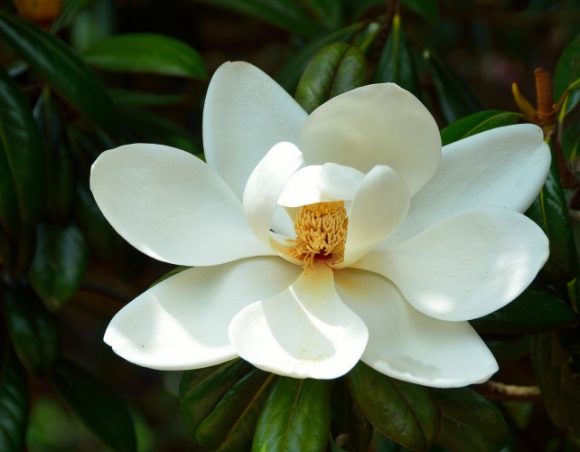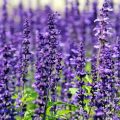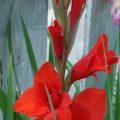- The Miraculous Shiny Bush Plant - January 18, 2021
- Colorful, Edible and Medicinal Celosia - January 10, 2021
- Radish, a Nutritional Power House - December 19, 2020
Magnolia is a large tree, reaching about 80 feet in height with a diameter of 3-5 feet. Its family is known to be among the oldest trees in the world. These trees are so ancient that their blossoms do not have real sepals and petals. Instead, they have petal-like tepals. In addition, the flowers do not produce true nectar and are not pollinated by bees because magnolias predate bees, however, they attract pollinating beetles with fragrant, sugary secretions and fragrances.
[Note: The Right Flowers is not a medical site. Knowledge of and information about the therapeutic benefits and applications of flowers, while known through the ages, does not constitute medical advice. If you are having health issues, you should consult with a physician.]
Magnolias bloom in a rainbow of colors which are quite a sight to behold. While some species flower in the heat of summer, others blossom in late winter to announce the coming of the warm weather ahead. Their white, pink or creamy flowers – the state flower of Louisiana and Mississippi – have a heady fragrance that most southerners are familiar with.
Magnolia trees are not just quintessential and magnificent but their blossoms are known to have medicinal properties too. Ancient records show that magnolia flowers have been used in Chinese medicine since 100 AD. Currently, there are more than 200 patented drugs in China based on the magnolia flower.
Basically, magnolia flowers derive their medicinal capabilities from potent compounds including honokiol and magnolol. These flowers are great for the following:
Allergies
Volatile oils extracted from magnolia blossoms have the potential of preventing allergic reactions such as asthma by inhibiting the release of histamines.
Sinusitis and rhinitis
According to Phyllis A. Balch in the book titled Prescription for Nutritional Healing, magnolia flowers have been used in Chinese medicine for years to alleviate headache and rhinitis associated with sinusitis. Studies published in August 2009 in the Chinese Journal of Integrated Traditional and Western Medicine shows that magnolia lilifloral extracts have the ability to reduce eosinophil cells in the blood which is highly beneficial to children with allergic problems.
Skincare
According to Leung’s Encyclopedia of Common Natural Ingredients, extracts from the magnolia flower have been used to reduce irritations caused by ingredients used to make cosmetics. They can also assist in getting rid of dark spots and whiten the skin.
Diabetes
An animal study published in October 2008 in the International Journal of Molecular Medicine indicates that magnolia blossom extracts have the ability to help in preventing diabetes caused by streptozotocin, a drug that was initially derived from the streptomyces achromogenes microorganism. The drug was used as an antibiotic until it was discovered to carry the potential of causing diabetes. Today, the drug is mostly used to treat pancreatic cancer.
You probably drive past these beautiful, stately, flowering trees without giving them much thought. But next time you encounter magnolias, you may need to consider appreciating not only their ornamental value but also their health benefits.





